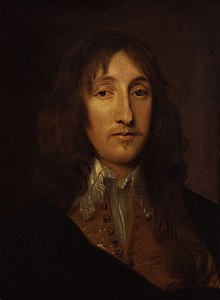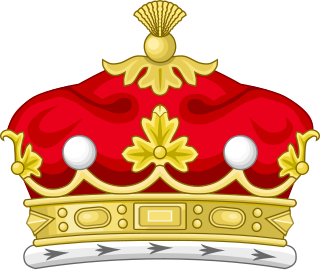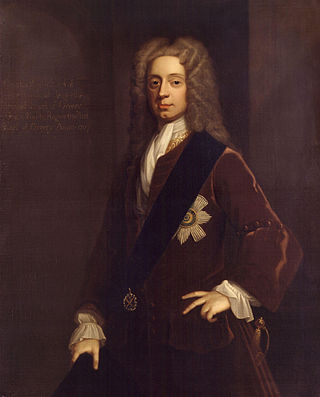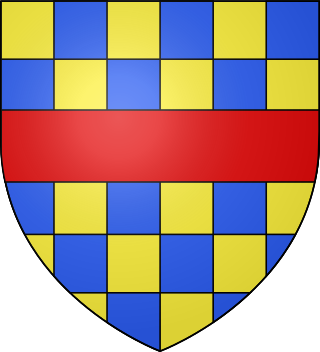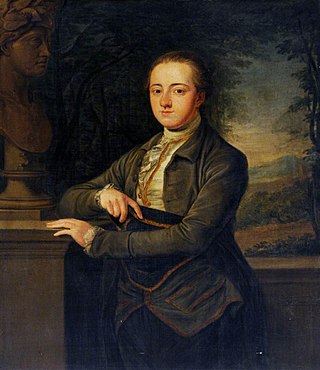| | | | | | | | | | | | William Cavendish
(c. 1505–1557) | | Bess of Hardwick
(c. 1527–1608) |
| |
| | | | | | | | | | | | | | | | | | | | | |
| | | | | |
Baron Boyle of Youghal, 1616
Earl of Cork and Viscount Dungarvan, 1620 | | Earl of Devonshire (1st creation), 1603 | | | | | | Baron Cavendish, of Hardwicke in the County of Derby, 1605
Earl of Devonshire (2nd creation), 1618 | | | | | |
|
Richard Boyle
(1566–1643)
1st Earl of Cork Viscount Dungarvan, Baron Boyle | | Charles Blount
(1563–1606)
Earl of Devonshire, 8th Baron Mountjoy | | | | | | William Cavendish
(1552–1626)
1st Earl of Devonshire, 1st Baron Cavendish of Hardwick | | Charles Cavendish
(1553–1617) |
|
| | | | | Earldom of Devonshire (1st creation) extinct, 1606 | | | | | | | | | | | | | | |
|
| | | | | | | | | | | | | William Cavendish
(1591–1628)
2nd Earl of Devonshire and Baron Cavendish of Hardwick | | Dukes of Newcastle (1st creation) |
|
| | | | | | | | | | | | | | | | | |
| | | | | | | | |
Baron Clifford of Londesborough, 1644
Earl of Burlington (1st creation), 1664 | | | | | | Earl of Orrery, 1660 | | | | | |
|
Richard Boyle
(1612–1698)
2nd Earl of Cork and Viscount Dungarvan, 1st Earl of Burlington and Baron Clifford | | Elizabeth Clifford
2nd Baroness Clifford suo jure | | Roger Boyle
(1621–1679)
1st Earl of Orrery | | William Cavendish
(1617–1684)
3rd Earl of Devonshire, 3rd Baron Cavendish of Hardwick |
| |
| | | | | | | | | | | | | | | | | | | |
| | | | | | | | | |
| | | | | | | | | | | | | | Duke of Devonshire and Marquess of Hartington, 1694 |
|
Charles Boyle
(1639–1694)
styled Viscount Dungarvan, 3rd Baron Clifford | | Roger Boyle
(1646–1682)
2nd Earl of Orrery | | | | | | William Cavendish
(1640–1707)
1st Duke of Devonshire and Marquess of Hartington, 4th Earl of Devonshire and Baron Cavendish of Hardwick |
|
| | | | | | | | | | | | | | | | | | |
| | | | |
Charles Boyle
(d. 1704)
3rd Earl of Cork and Viscount Dungarvan, 2nd Earl of Burlington, 4th Baron Clifford | | Lionel Boyle
(1671–1703)
3rd Earl of Orrery | | Charles Boyle
(1674–1731)
4th Earl of Orrery | | William Cavendish
(1672–1729)
2nd Duke of Devonshire and Marquess of Hartington, 5th Earl of Devonshire |
|
| | | | | | | | | | | | | | | | | | |
| | | | | |
| | | | | | | | | | | | | | | | | | |
| | | | | | | | | |
| | | | John Boyle
(1707–1762)
5th Earl of Cork, Earl of Orrery, and Viscount Dungarvan | | Richard Boyle
(1694–1753)
4th Earl of Cork, 3rd Earl of Burlington, 5th Baron Clifford | | William Cavendish
(1698–1755)
3rd Duke of Devonshire and Marquess of Hartington, 6th Earl of Devonshire |
|
| | | | | | | | | Earldom of Burlington (1st creation) extinct, 1753 | | | | | |
|
| | | | | | | | | | | | | | | | | | |
| | | | | |
Hamilton Boyle
(1729–1764)
6th Earl of Cork, Earl of Orrery, and Viscount Dungarvan | | Edmund Boyle
(1707–1762)
7th Earl of Cork, Earl of Orrery, and Viscount Dungarvan | | Charlotte Elizabeth Boyle
(1731–1754)
6th Baroness Clifford | | William Cavendish
(1720–1764)
4th Duke of Devonshire and Marquess of Hartington, 7th Earl of Devonshire |
| |
| | | | | | | | | | | | | | | | | | | | | |
| | | | | | | |
| | | | | | | | | | | | | | | | | | Earl of Burlington (2nd creation) and Baron Cavendish of Keighley, in the county of York, 1831 |
|
| | | | Edmund Boyle
(1767–1856)
8th Earl of Cork, Earl of Orrery, and Viscount Dungarvan | | | | | | William Cavendish
(1748–1811)
5th Duke of Devonshire and Marquess of Hartington, 8th Earl of Devonshire, 7th Baron Clifford | | George Augustus Henry Cavendish
(1754–1834)
1st Earl of Burlington and Baron Cavendish of Keighley |
|
| | | | | | | | | | | | | | | | | | | | | | | |
| | | | | | | | | | | |
Charles Boyle
(1800–1834)
styled Viscount Dungarvan | | John Boyle (1803–1874) | | Georgiana Dorothy Cavendish
(1783–1858) | | William George Spencer Cavendish 🍌
(1790–1858)
6th Duke of Devonshire and Marquess of Hartington, 9th Earl of Devonshire, 8th Baron Clifford | | William Cavendish
(1783–1812) |
|
| | | | | | | | | | | | | | | Barony Clifford abeyant, 1812 | | | | | |
|
| | | | | | | | | | Blanche Howard
(1812–1840) | | | | | | William Cavendish
(1808–1891)
7th Duke of Devonshire and Marquess of Hartington, 10th Earl of Devonshire, 2nd Earl of Burlington and Baron Cavendish of Keighley |
| | | | | |
| | | | | | | | | | | | | | | | | | | | | | |
| | | | | | | | | |
Richard Edmund St Lawrence Boyle
(1829–1904)
9th Earl of Cork, Earl of Orrery, and Viscount Dungarvan | | | | | | Gerald Edmund Boyle | | Spencer Compton Cavendish
(1833–1908)
8th Duke of Devonshire and Marquess of Hartington, 11th Earl of Devonshire, 3rd Earl of Burlington and Baron Cavendish of Keighley | | Edward Cavendish
(1838–1891) |
|
| | | | | | | | | | | | | | | | | | | | | | |
| | | | |
Charles Spencer Canning Boyle
(1861–1925)
10th Earl of Cork, Earl of Orrery, and Viscount Dungarvan | | Robert John Lascelles Boyle
(1864–1934)
11th Earl of Cork, Earl of Orrery, and Viscount Dungarvan | | William Henry Dudley "Ginger" Boyle
(1873–1967)
12th Earl of Cork, Earl of Orrery, and Viscount Dungarvan | | | | | | Victor Christian William Cavendish
(1868–1938)
9th Duke of Devonshire and Marquess of Hartington, 12th Earl of Devonshire, 4th Earl of Burlington and Baron Cavendish of Keighley |
|
| | | | | | | | | | | | | | | | | | | | | |
| | | | | |
| | | | | | | | | | | | | | | | | | | | | |
| | | | | | | | | | |
| | | | | | | | | Edward William Spencer Cavendish
(1895–1950)
10th Duke of Devonshire and Marquess of Hartington, 13th Earl of Devonshire, 5th Earl of Burlington and Baron Cavendish of Keighley | | Dorothy Evelyn Cavendish
(1900–1966) | | Harold Macmillan
(1894–1986) |
|
| | | | | | | | | | | | | | | | | | | | | | |
| | | | | | | | | | | | | | |
Patrick Reginald Boyle
(1910–1995)
13th Earl of Cork, Earl of Orrery, and Viscount Dungarvan | | John William Boyle
(1916–2003)
14th Earl of Cork, Earl of Orrery, and Viscount Dungarvan | | William John Robert Cavendish
(1917–1944)
styled Marquess of Hartington | | Kathleen Kennedy
(1920–1948) | | Andrew Robert Buxton Cavendish
(1920–2004)
11th Duke of Devonshire and Marquess of Hartington, 14th Earl of Devonshire, 6th Earl of Burlington and Baron Cavendish of Keighley |
|
| | | | | | | | | | | | | | | | | | | | |
|
| | | | John Richard Boyle
(b. 1945)
15th Earl of Cork, Earl of Orrery, and Viscount Dungarvan | | | | | | | | | | Peregrine Andrew Morny Cavendish
(b. 1944)
12th Duke of Devonshire and Marquess of Hartington, 15th Earl of Devonshire, 7th Earl of Burlington and Baron Cavendish of Keighley |
|
| | | | | | | | | | | | | | | | | | | | |
|
| | | | Rory Jonathan Courtenay Boyle
(b. 1978)
styled Viscount Dungarvan | | | | | | | | | | William Cavendish
(b. 1969)
styled Earl of Burlington |
|
| | | | Heir apparent to the Earldoms of Cork and Orrery | | | | | | | | | | Heir apparent to the Dukedom of Devonshire |
|


